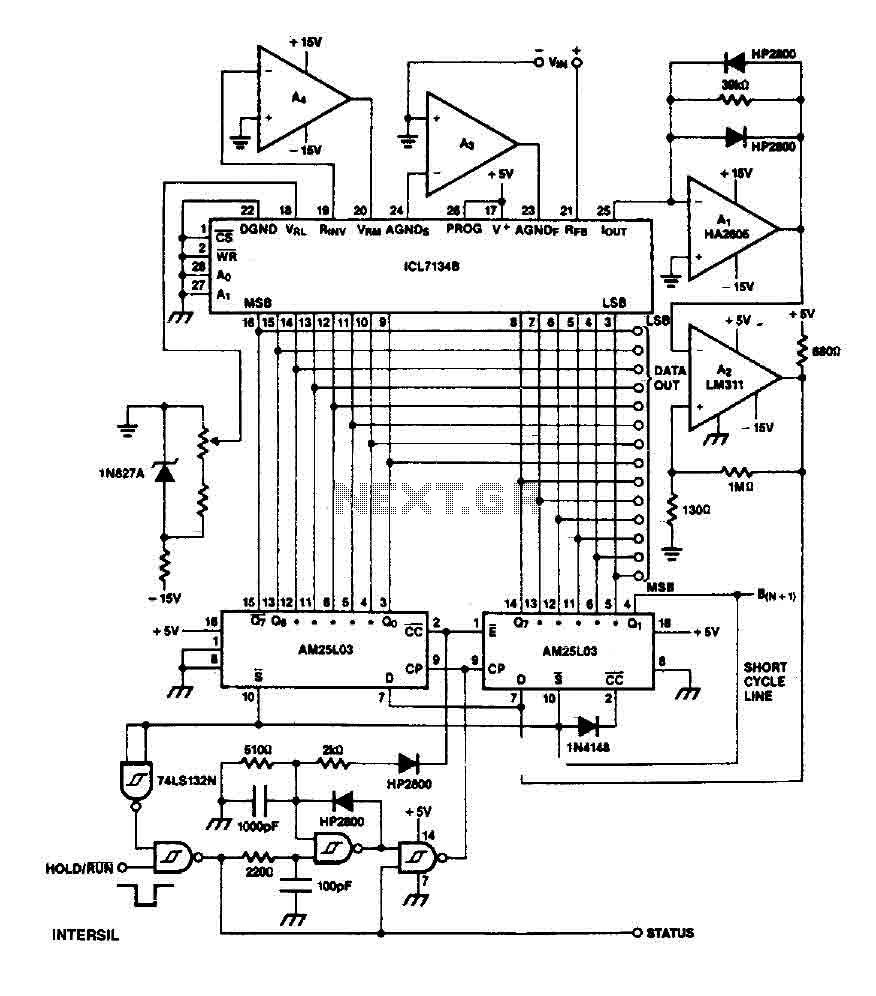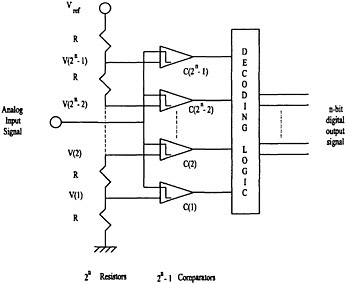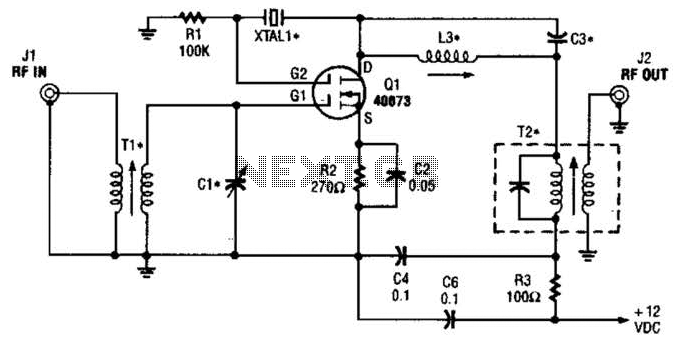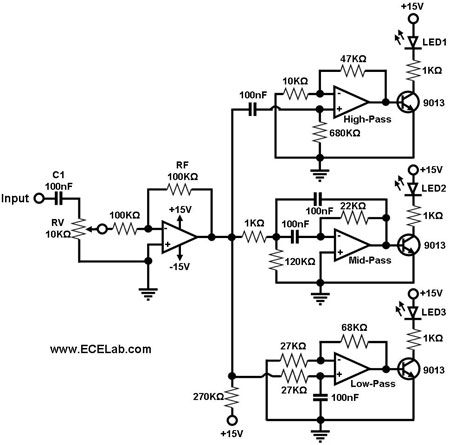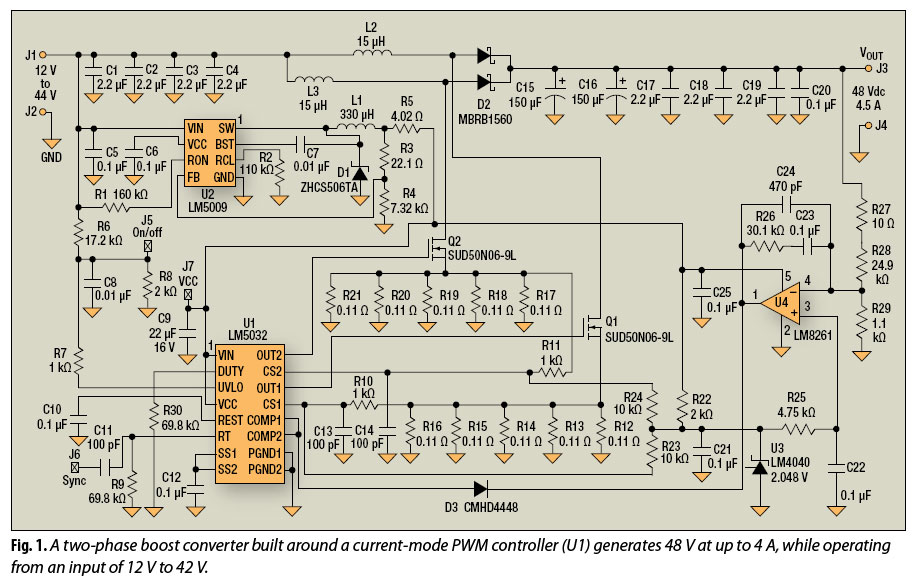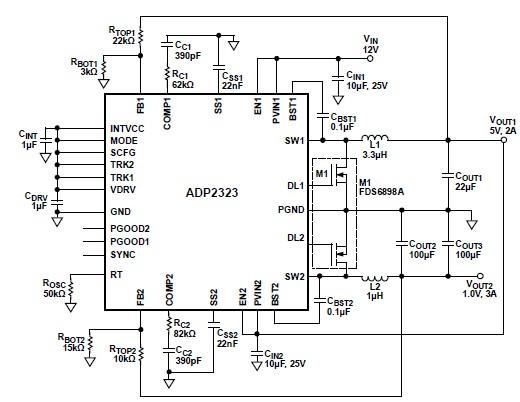
converter lhc600a 40v
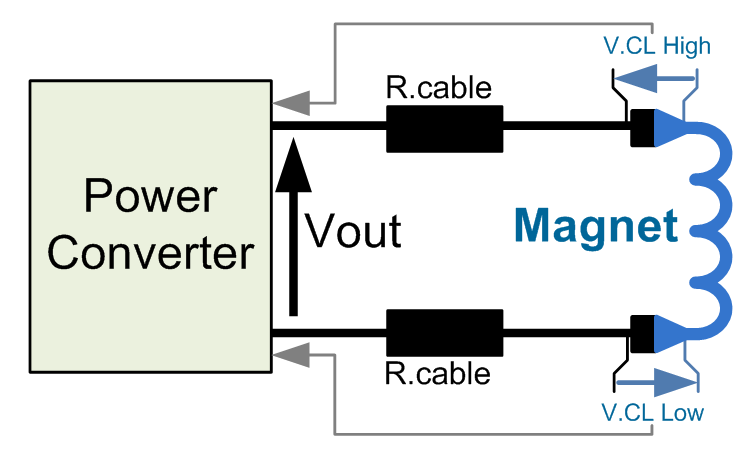
This power converter is utilized in the LHC machine to supply power to superconductive magnets. It is situated in the underground installation of the LHC, in proximity to the loads to minimize cable losses. The voltage source employs a half-bridge resonant topology (dual thyristor) followed by a four-quadrant linear stage, facilitating four-quadrant operation. This configuration results in very low output electromagnetic compatibility (EMC) noise, although it introduces some complexity in control due to the various stages involved. A high-precision current control loop is managed by a digital controller known as the Function Generator Controller (FGC). This unit incorporates a high-precision Sigma Delta Analog to Digital Converter (ADC) that digitizes the analog current measurements obtained from two DC current transducers (DCCTs). The precision of the system is directly dependent on the accuracy of the sensors, including the DCCTs, the ADCs, and the algorithms used in the regulation loop. The voltage source functions as a power amplifier, supplying power to the load through a high-bandwidth voltage loop exceeding 500 Hz. The power converter is integral to the magnet protection scheme, although it is not solely responsible for monitoring and diagnosing the status of the superconductive magnets. Dedicated systems such as the Quench Protection System (QPS) and the Power Interlock Controller (PIC) can interlock the power converter if safety conditions for the magnets necessitate it. The LHC600A-40V power converter also oversees the protection of the current leads, which are the two electrical conductors (positive and negative polarities) that transition between cold and warm environments. The power converter provides a safe incoming signal known as Fast Abort. This redundant signal utilizes two pathways to interlock and halt the converter, with redundancy checks performed each time it is activated. The magnet current path is secured through a dedicated system referred to as a crowbar or through the power module in the event of a short circuit in its output stage. The active crowbar system, located in the rack, offers a safe resistive discharge path for the magnet current, capable of dissipating a significant portion of the magnet energy. This system is based on a 50 mOhm power resistance with back-to-back thyristors triggered at a specified output voltage (±53V), creating a secure path for the magnet current. An additional DC contactor (Converter type A) ensures that potential short circuits at the power module level do not prevent the dissipation of magnet energy in the crowbar resistance. The machine interlock system can request a Fast Abort from the converter if a quench is detected. The converter is designed to respond as quickly as possible, ceasing energy supply to the load. The delay between a Fast Abort request and the actual opening of the four-quadrant output power stage is less than 1 ms, although a 20 ms delay for the AC mains contactor should be considered as a worst-case scenario (in the event of internal control malfunction). A typical sequence may be described as follows: this signal, part of the magnet safety scheme, acts redundantly at the level of the converter AC mains contactor. Two monitored paths are utilized to stop the contactor. The detection system operates as both active and passive, relying on a converter state-controlled 100 mA current source. The active system is disabled when the power converter is turned ON, with switch S1 activated to short-circuit a 100-ohm resistor, while a 10-ohm resistance in series with a fuse is only connected between the negative polarity and earth. The active system is enabled when the power converter is turned OFF. In this state, the active circuit injects a 100 mA DC current into a grounded resistive branch, resulting in a common mode voltage at the output circuit that facilitates earth fault detection. The common mode voltage of the output circuit, in the absence of an earth fault, is approximately 10V (calculated as 100 mA x 100 ohms) and is independent of load operation, thereby enabling the detection of an earth fault even when the converter is OFF (but not condemned). If an earth fault occurs in the output circuit, a faulty current will deviate.
The power converter circuit is designed with a robust architecture to ensure reliable operation under the demanding conditions of the LHC environment. The half-bridge resonant topology allows for efficient power conversion, minimizing heat generation and improving overall system efficiency. The dual thyristor configuration enables precise control over the output voltage and current, which is crucial for maintaining the superconductive magnets at their required operational parameters.
The FGC plays a pivotal role in the system's performance, utilizing advanced algorithms for real-time current regulation. The integration of high-precision ADCs ensures that the current measurements are accurate, allowing for timely adjustments to the control loop. This level of precision is essential for preventing quenching of the superconductive magnets, which can occur due to excessive current or thermal fluctuations.
In addition to the primary functions of power delivery and current control, the safety features incorporated into the power converter are critical for the protection of both the equipment and personnel. The Fast Abort signal and the crowbar system provide multiple layers of redundancy, ensuring that any fault conditions are addressed swiftly and effectively. The design of the interlock system further enhances safety by enabling immediate response to detected faults.
The overall design philosophy of the LHC power converter emphasizes reliability, efficiency, and safety, making it a vital component in the operation of superconductive magnets within the LHC machine. The careful consideration of both operational and safety requirements ensures that the power converter can perform effectively in the high-energy physics environment of the LHC.This Power Converter is used in LHC Machine to power superconductive magnets. It is located in the LHC underground installation, close to the loads to limit cable losses in the underground installation. Voltage Source is based on a half bridge resonnant topology (dual thyristor) followed by a 4 quadrant linear stage to allow the 4 quadrant operati
on. This topology gives a very low output EMC noise, at a cost of some control complexity given by the different stages. High precision current control loop is managed by the digital controller called FGC (Function Generator Controller).
This unit includes a high precision Sigma Delta Analog to Digital Converter which digitalize the analog current measurement coming from 2 DCCTs (DC current Transducer). Precision is then directly relying on sensor precision: DCCT, the ADCs, and the algorithm being used for the regulation loop.
Voltage source is then used as a power amplifier, powering the load through a high bandwidth voltage loop (>500Hz). Power Converter is part of magnet protection scheme, even if not directly fully responsible of the monitoring and diagnostic of the superconductive magnet status.
Dedicated systems QPS (Quench Protection System) + PIC (Power Interlock Controller) can interlock Power Converter if magnet safety requires it. LHC600A-40V Power Converter is also responsible of the current leads protection. These current leads are the 2 (minus and plus polarities) electrical conductors located at the transition between cold and warm environment.
Power Converter provide a safe incoming signal called Fast Abort. This redundant signal uses 2 paths to interlock and stop the converter and its redundancy is checked each time it acts. Magnet current path is ensured through a dedicated system called crowbar or through Power Module in case its output stage dies in short.
Crowbar active system is located in the rack and provides a safe resistive discharge path for magnet current, with a capability to dissipate, most of the time, part of magnet energy. The system is based on a 50 mOhms Power Resistance series back-to-back thyristors being fired at a given output voltage ( ±53V), and then providing a safe path for magnet current.
Additional DC-Contactor (Converter type A) ensure that no potential short-circuits at the level of the Power Module can prevent the magnet energy to be actually dissipated in the Crowbar resistance. Machine Interlock system can request a Fast Abort to the converter, in case a quench is detected. Converter is then assumed to react as soon and as quick as possible, stopping providing energy to the load.
Delay time between a Fast Abort request and actual opening of the 4-quadrant output power stage is less than 1mS, but 20ms, AC Mains Contactor delay time, should be considered as a worst case (internal control malfunction case). A typical sequence could be described as follow: This signal being part of the magnet safety scheme, it is acting redundantely at the level of Converter AC Mains Contactor.
2 paths are used and monitored to stop the contactor. Detection system is an active / passive system, since relying on a converter state-controlled 100mA current source. Active system is disabled when Power Converter is set ON, S1 being ON and short-circuiting the 100 Ohms resistor, with a 10 Ohms resistance series a fuse only being connected between negative polarity and earth.
Active system is enabled when Power Converter is set OFF. The active circuit injects a 100 mA DC current on a grounded resistive branch, resulting in a common mode voltage at the output circuit easing the earthing fault detection. Output circuit Common mode voltage is, without any earth fault, around 10V (=100 mA x 100 Ohms), and is not relying on load operation, making possible to detect an earth fault with converter being OFF.
(OFF, not condamned). If an earth fault occurs on the output circuit, a faulty current will be deviat 🔗 External reference
The power converter circuit is designed with a robust architecture to ensure reliable operation under the demanding conditions of the LHC environment. The half-bridge resonant topology allows for efficient power conversion, minimizing heat generation and improving overall system efficiency. The dual thyristor configuration enables precise control over the output voltage and current, which is crucial for maintaining the superconductive magnets at their required operational parameters.
The FGC plays a pivotal role in the system's performance, utilizing advanced algorithms for real-time current regulation. The integration of high-precision ADCs ensures that the current measurements are accurate, allowing for timely adjustments to the control loop. This level of precision is essential for preventing quenching of the superconductive magnets, which can occur due to excessive current or thermal fluctuations.
In addition to the primary functions of power delivery and current control, the safety features incorporated into the power converter are critical for the protection of both the equipment and personnel. The Fast Abort signal and the crowbar system provide multiple layers of redundancy, ensuring that any fault conditions are addressed swiftly and effectively. The design of the interlock system further enhances safety by enabling immediate response to detected faults.
The overall design philosophy of the LHC power converter emphasizes reliability, efficiency, and safety, making it a vital component in the operation of superconductive magnets within the LHC machine. The careful consideration of both operational and safety requirements ensures that the power converter can perform effectively in the high-energy physics environment of the LHC.This Power Converter is used in LHC Machine to power superconductive magnets. It is located in the LHC underground installation, close to the loads to limit cable losses in the underground installation. Voltage Source is based on a half bridge resonnant topology (dual thyristor) followed by a 4 quadrant linear stage to allow the 4 quadrant operati
on. This topology gives a very low output EMC noise, at a cost of some control complexity given by the different stages. High precision current control loop is managed by the digital controller called FGC (Function Generator Controller).
This unit includes a high precision Sigma Delta Analog to Digital Converter which digitalize the analog current measurement coming from 2 DCCTs (DC current Transducer). Precision is then directly relying on sensor precision: DCCT, the ADCs, and the algorithm being used for the regulation loop.
Voltage source is then used as a power amplifier, powering the load through a high bandwidth voltage loop (>500Hz). Power Converter is part of magnet protection scheme, even if not directly fully responsible of the monitoring and diagnostic of the superconductive magnet status.
Dedicated systems QPS (Quench Protection System) + PIC (Power Interlock Controller) can interlock Power Converter if magnet safety requires it. LHC600A-40V Power Converter is also responsible of the current leads protection. These current leads are the 2 (minus and plus polarities) electrical conductors located at the transition between cold and warm environment.
Power Converter provide a safe incoming signal called Fast Abort. This redundant signal uses 2 paths to interlock and stop the converter and its redundancy is checked each time it acts. Magnet current path is ensured through a dedicated system called crowbar or through Power Module in case its output stage dies in short.
Crowbar active system is located in the rack and provides a safe resistive discharge path for magnet current, with a capability to dissipate, most of the time, part of magnet energy. The system is based on a 50 mOhms Power Resistance series back-to-back thyristors being fired at a given output voltage ( ±53V), and then providing a safe path for magnet current.
Additional DC-Contactor (Converter type A) ensure that no potential short-circuits at the level of the Power Module can prevent the magnet energy to be actually dissipated in the Crowbar resistance. Machine Interlock system can request a Fast Abort to the converter, in case a quench is detected. Converter is then assumed to react as soon and as quick as possible, stopping providing energy to the load.
Delay time between a Fast Abort request and actual opening of the 4-quadrant output power stage is less than 1mS, but 20ms, AC Mains Contactor delay time, should be considered as a worst case (internal control malfunction case). A typical sequence could be described as follow: This signal being part of the magnet safety scheme, it is acting redundantely at the level of Converter AC Mains Contactor.
2 paths are used and monitored to stop the contactor. Detection system is an active / passive system, since relying on a converter state-controlled 100mA current source. Active system is disabled when Power Converter is set ON, S1 being ON and short-circuiting the 100 Ohms resistor, with a 10 Ohms resistance series a fuse only being connected between negative polarity and earth.
Active system is enabled when Power Converter is set OFF. The active circuit injects a 100 mA DC current on a grounded resistive branch, resulting in a common mode voltage at the output circuit easing the earthing fault detection. Output circuit Common mode voltage is, without any earth fault, around 10V (=100 mA x 100 Ohms), and is not relying on load operation, making possible to detect an earth fault with converter being OFF.
(OFF, not condamned). If an earth fault occurs on the output circuit, a faulty current will be deviat 🔗 External reference
Warning: include(partials/cookie-banner.php): Failed to open stream: Permission denied in /var/www/html/nextgr/view-circuit.php on line 713
Warning: include(): Failed opening 'partials/cookie-banner.php' for inclusion (include_path='.:/usr/share/php') in /var/www/html/nextgr/view-circuit.php on line 713
